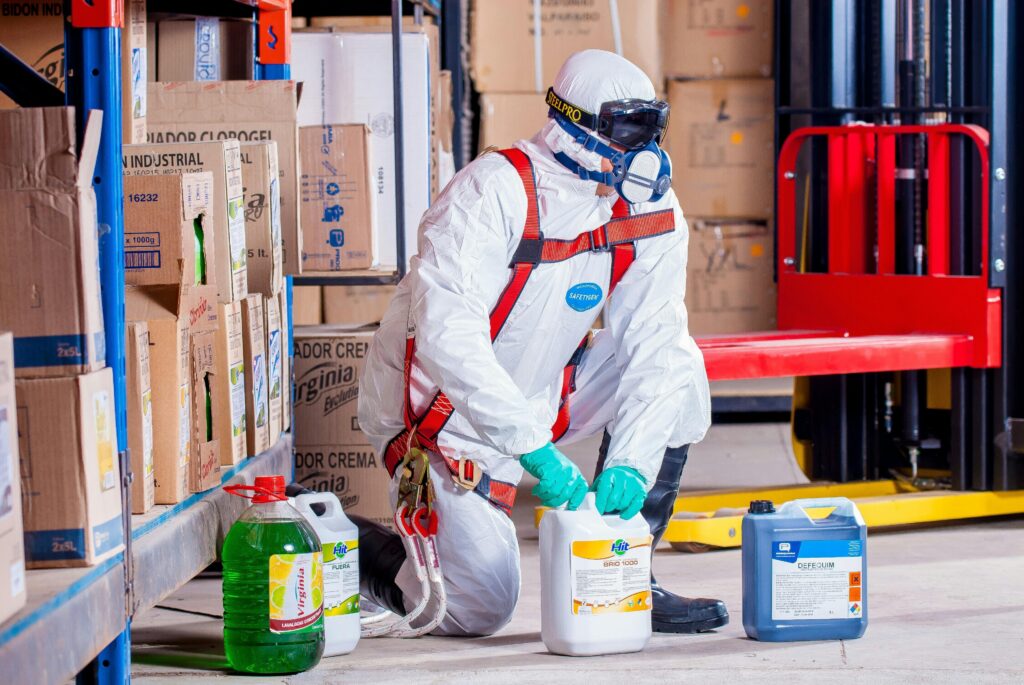Advantages of Chemicals in Animal Production
Chemicals used in animal production, such as growth hormones, antibiotics, and pesticides offer several benefits that contribute to the efficiency and profitability of livestock farming.
Increased Productivity
Growth hormones and antibiotics are commonly used to enhance growth rates and feed conversion efficiency in livestock. This results in accelerated growth of animals, leading to increased production of meat, milk, and eggs. For example, growth-promoting hormones like bovine somatotropin (BST) increase milk yield in dairy cows, while antibiotics can improve overall health and growth in various species.
Disease Prevention
Antibiotics and pesticides are crucial for preventing and controlling diseases in livestock. By effectively managing bacterial infections and controlling pests that transmit diseases, these chemicals reduce the incidence of illnesses among animals. This not only improves animal welfare but also ensures that consumers receive safe and healthy food products. Preventing diseases also reduces the need to cull sick animals, which helps maintain herd health and productivity.
Economic Efficiency
Enhanced animal health and accelerated growth rates contribute directly to economic gains for farmers. Healthy animals grow faster, require fewer resources for treatment, and have lower mortality rates, leading to reduced costs and increased profitability. Higher productivity means greater output per unit of input, such as feed and labor, which improves the overall efficiency of livestock operations.
Environmental Benefits
While there are concerns about environmental impacts, properly managed use of chemicals can also benefit the environment. By preventing diseases and improving feed efficiency, fewer resources are needed per unit of animal product produced, reducing the environmental footprint of livestock farming. Controlling pests with pesticides can help minimize crop damage and reduce the need for extensive land use for feed production.
Technological Advancements
The development and use of chemical interventions in animal production reflect ongoing technological advancements in agriculture. These innovations enable farmers to meet the growing demand for animal products efficiently and sustainably, contributing to global food security.
Risks and Concerns of Chemicals in Animal Production
While chemicals like antibiotics, growth hormones, pesticides, and disinfectants offer benefits in animal production, they also present significant risks and concerns that must be carefully managed.
Antibiotic Resistance
Development of Resistant Bacteria– Overuse and misuse of antibiotics in food-producing animals can lead to the emergence of antibiotic-resistant bacteria. These bacteria can transfer resistance genes to human pathogens, reducing the effectiveness of antibiotics in treating infections in both animals and humans. Transmission can occur through direct contact, environmental contamination, and consumption of contaminated animal products.
Public Health Impact– Antibiotic-resistant infections pose serious health risks, potentially leading to treatment failures and increased healthcare costs. Responsible antibiotic use, including adherence to withdrawal periods and veterinary oversight, is crucial to mitigate this risk.
Hormone Residues
Consumer Concerns – Hormone residues in meat and dairy products can raise concerns among consumers. Continuous exposure to these residues may disrupt hormonal balance in humans, potentially leading to health issues such as hormonal disturbances and certain cancers.
Regulatory Measures- Strict regulations on the use of growth-promoting hormones are in place to ensure safety. Withdrawal periods before animals enter the food supply help minimize hormone residues in animal products consumed by humans.
Environmental Impact
Pollution- Chemicals like pesticides and disinfectants used in livestock facilities can pollute soil and water resources. Runoff from farms can carry these chemicals into nearby water bodies, affecting aquatic ecosystems and potentially contaminating drinking water sources.
Ecological Effects-Pesticides and disinfectants may harm non-target organisms, disrupt ecological balances, and contribute to biodiversity loss. Sustainable agricultural practices and proper application techniques can mitigate environmental impacts.
Animal Welfare
Health Complications– The use of growth promoters and certain chemicals can lead to health issues in animals. These include lameness, reproductive disorders, and metabolic disturbances, affecting animal welfare.
Ethical Considerations- While the use of these chemicals may be legal and regulated, ethical considerations regarding animal welfare are paramount. Proper housing conditions, veterinary care, and adherence to welfare standards are essential to ensure the well-being of animals throughout their lifecycle.
Regulatory and Ethical Oversight
Balancing Risks and Benefits- Regulations aim to balance the benefits of chemical interventions in animal production with potential risks to human health, animal welfare, and the environment.
Transparency and Accountability. Transparent communication about chemical use practices, adherence to safety guidelines, and ongoing research into safer alternatives are crucial for building consumer trust and ensuring sustainable agricultural practices.
Chemicals arguably play a critical role in modern animal production systems but their use must be carefully managed to minimize risks and maximize benefits. Continued advancements in research, technology, and regulatory frameworks are essential to promote safer and more sustainable practices in livestock farming.

Pingback: Understanding the Role of Chemicals in Livestock Production – TechAnimal Hub